BCE equips the BTS Audiovisual Henri Martin of Saint-Quentin


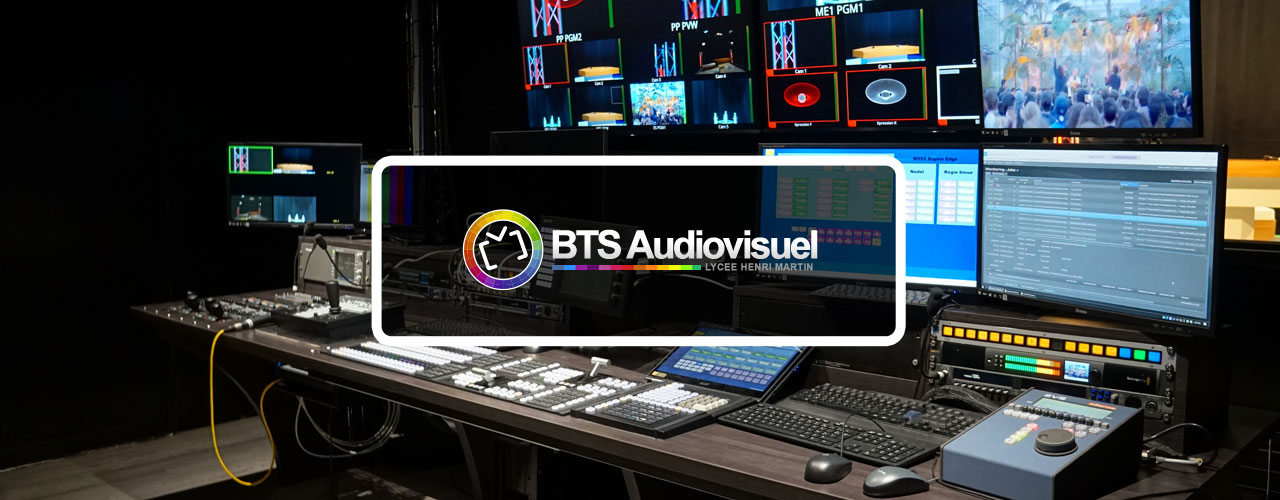
The aim of a BTS Audiovisual is to foster learning on different types of materials, the robustness of which will ensure the training of students while respecting the budget of the establishment. The Henri Martin High School thus foreshadows what a BTS Audiovisual should be in the future, namely a hybrid architecture open to the future.
“We had started with 12 students and we got to more than 120. While our facilities were 15 years old, there was an equation to be solved between teaching, available materials and the number of students. Technology has evolved apace, and we have been able to benefit from a grant from the Hauts-de-France region that has enabled this evolution,” said Jacques Tabary, headmaster of Henri Martin High School.
The BTS Audiovisual Henri Martin is one of the most important school in France. It accommodates fifteen students per class and has five options. Four years ago, the BTS took over part of a BTS created in Amiens as an apprenticeship with “Editing” option. Since then it has also included an optional “Imaging” course and last year was opened a pro license in “Postproduction Sound”.
The idea of the Hauts-de-France region, under the leadership of its president Xavier Bertrand, was to equip the BTS with this new material by depreciating its costs on the BTS, the apprenticeship and the pro license. After the drafting of a specification, produced by BOB (Boîte à Outils Broadcast), and the publication of a tender, it was won by BCE. In addition to the financial dimension, which is important in this kind of project, it is the human and listening dimension that has prevailed.
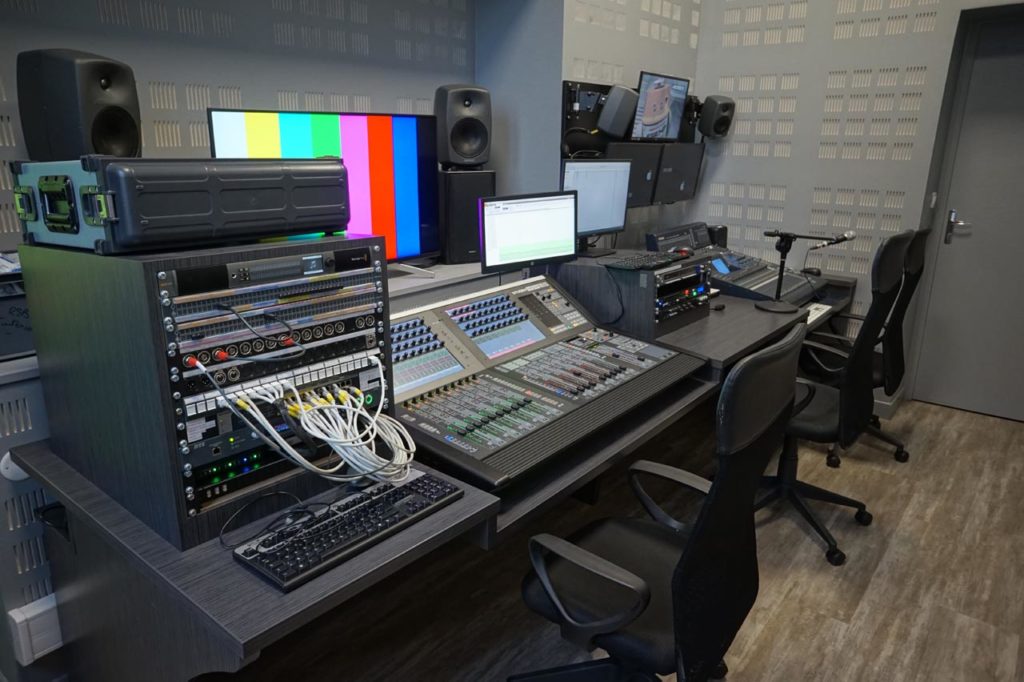
Control Room of the Studio Bleu (BTS Henri Martin)
“Everything was done in a close relationship and great involvement of the teaching team. Teachers knew what they wanted but had sometimes difficulties expressing their needs. You need to have a project leader who monitors constantly the budgets because we do not have the expertise in-house. Too technical, public buyers of the region did not have this skill. If we had not had the close partnership with BCE and BOB, we would not have been able to come up with such a result,” underlines the headmaster.
BCE teams were on site regularly to ensure the cabling, the equipment integration, in synergy with the teachers and Cyril Mazouër, Director of BOB.
“You have to pay attention in order to understand the needs. While Cyril has done a remarkable job of defining the BTS needs, it was important for us to let the teachers express themselves with their own words. I think that this relationship and the flexibility that we have introduced in this project have allowed everything to go well, without any problems,” said Philippe Mauduit, President of BCE France.
The BTS Audiovisual facility upgrade project ran from December 2018 to May 2019.
A difficult exercise as José Delclitte, the school intendant, points out, “The renewal of the equipment took place during the scholarship of the BTS. The equipment began to be installed at the end of 2018, coinciding with the first exams. It was necessary to juggle between the old material and the new without breaking the academic curriculum.”
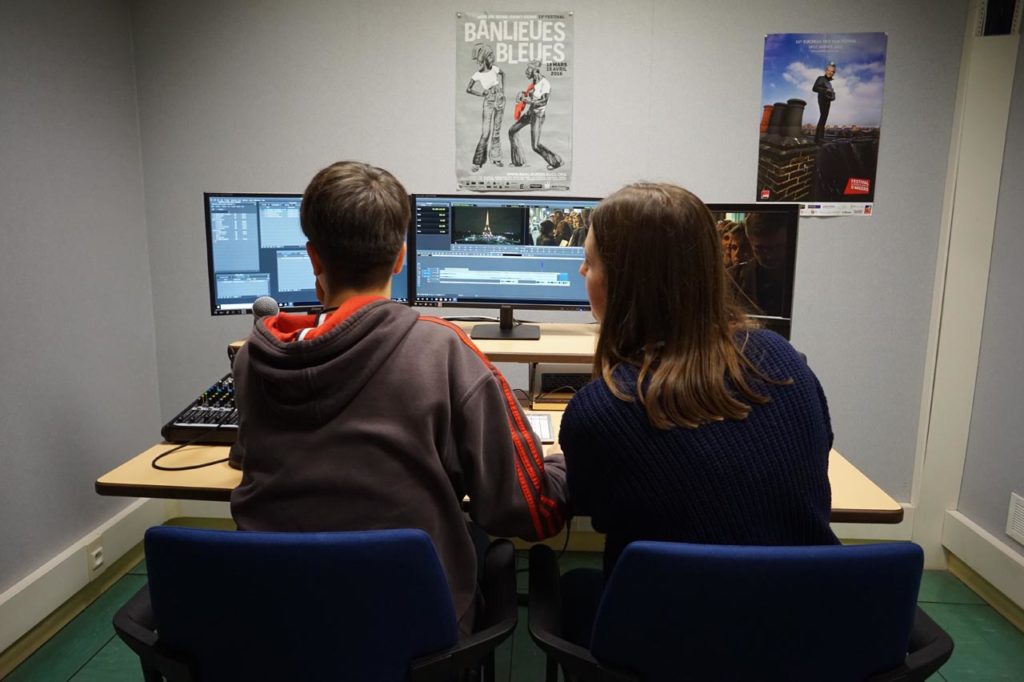
Editing Room (BTS Henri Martin)
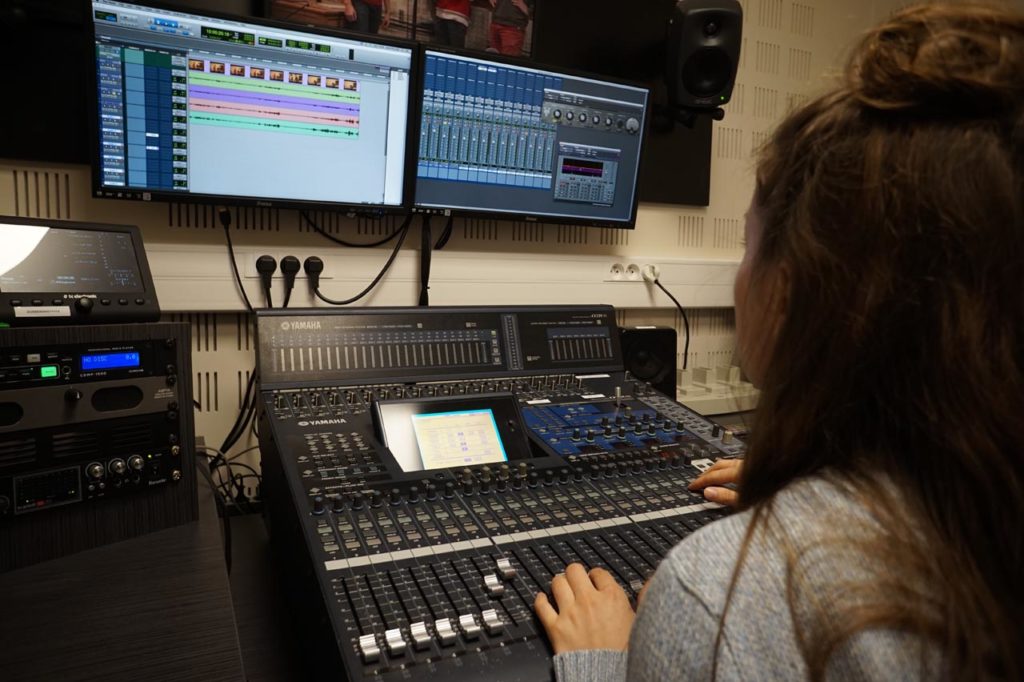
Sound Control Room (BTS Henri Martin)
“There is not necessarily a total consistency in the equipment deployed, but you have to learn about new and older technologies. This disparity of equipment is necessary to train on any type of tools,” continues Philippe Mauduit.
The project management assistance and consulting for the BTS Audiovisual are very different from a conventional assistance mission. When teaching in a BTS, the school year is very busy and opportunities to work alongside professionals are limited. The BTS Audiovisual was still in SD; so, it is a giant leap that it has just taken by switching to HD, HDR and IP infrastructure. It was also essential to train students on IP, while keeping SDI as well, which is still implemented in numerous media companies.
The BTS is like a small television channel that would have a rather developed production and post-production infrastructure. The platform is based on a hybrid architecture SDI and SMPTE 2110 with a six-channel EVS server in the central hub, the channels are shared between the two control rooms of the two studios. The main studio, called the green studio, is the largest and includes a fixed control with a 64 x 64 SDI grid and an IP SMPTE-2110 network. The EVS server is native in 2110, the mixer and the multi-viewer are hybrid. The other equipment is only in SDI (cameras, infographics…). Lawo’s V matrix converter (IP/SDI converters) allow the exchange between the two worlds. The installed frame contains two modules: an IPG 10/10 SDI and 20/20 IP, as well as a multi-view 18/2 SDI and 24/8 IP.
We created different scenarios to match the different learnings of the students. So, a beginner student who learns to switch the output of a camera into a multi-viewer does not really know what is going on. When he understands the technique better, and thanks to a virtual panel, he can discover the interactions between the equipment:
“For cost reasons, it is increasingly rare to have video patches within the control rooms. In a school, our experience showed us that it was essential. This allows students to visualize where a signal is going. Obviously, the IP part is not materialized in the same way; that’s why we needed to find the best compromise between pedagogy and the need for IP,” explains Cyril Mazouër.
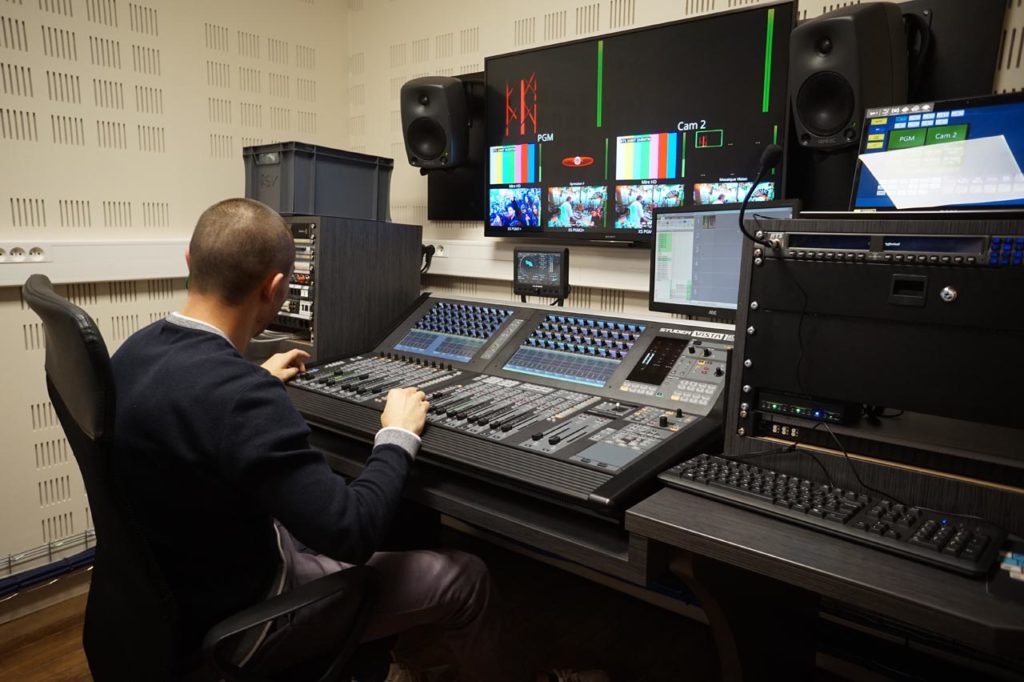
Control Room (BTS Henri Martin)
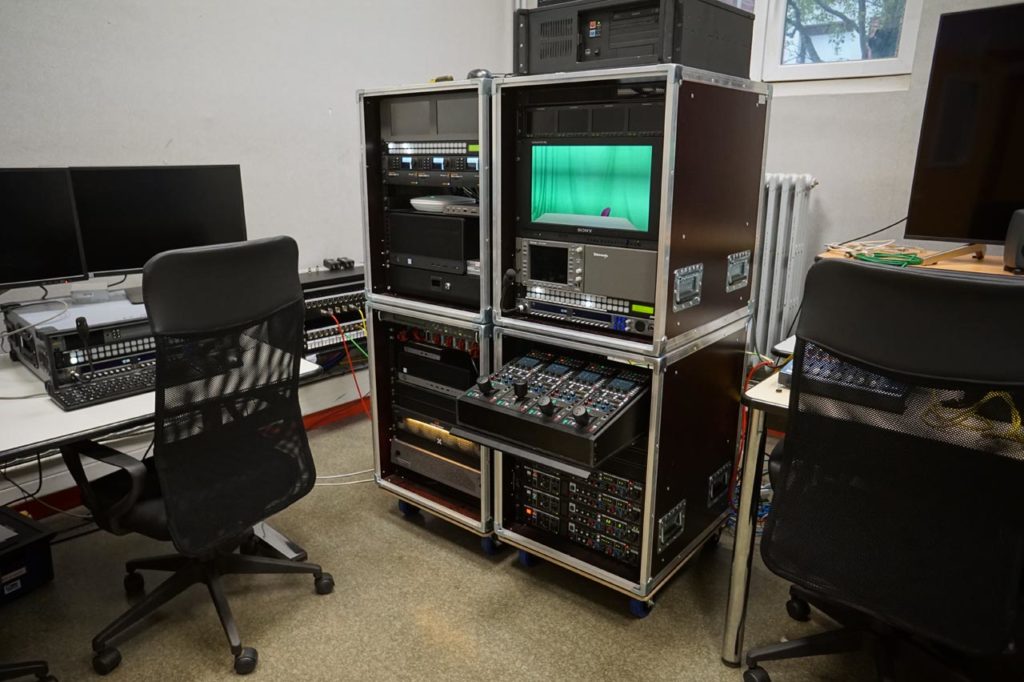
Mobile Control (BTS Henri Martin)
The second control room, which is in the blue studio, is mobile and used to practice cabling. In order to allow students to easily understand the links between the different equipment’s, it was decided that this control room would be in SDI. It includes a 16 x 16 grid, a 2 M/E Ross Carbonite mixer, four cameras, a PTZ and a vision station. Teachers can choose to wire all or part of the mobile platform according to the planned exercises.
This platform is important for the “Exploitation” option because it is necessary to wire, unwire and rewire. The cabling of a control room is part of the exam at the BTS, and therefore simpler on a mobile unit. Once students are mastering the technology, they will be able to exchange data with the other control rooms via an SDI/IP conversion card or retrieve channels from the EVS server. Both control rooms can work in duplex.
Each video control room has its own sound control room. There is the main console (Studer and RTS intercom consoles) and the “recycled” console with the old equipment, so two students can work at the same time. An Avid Pro Tools is associated with the consoles, allowing post-production works. The sound studio has a third control room for sound recording, live performance and radio shows.
“In the “audio” branch of the BTS, it is important to have classes dealing with analog and digital environments. Students need to practice cabling, therefore there is a workshop table on which it is possible to bring any console and do the connections,” says Bastien Lenoir, audio teacher.
All the classrooms and the control rooms, the central hub and the auditoriums are connected by a KVM network in order to be able to control the workstations from the classroom. Students have access to their own machine which are all connected in a network. The storage of each machine is local, but a common exchange server is available. It is possible, while in the classroom, to connect, via the KVM, a machine on a video projector and to have, on the big screen for example, a video editing project in progress, which is quite unique on the educational side.
The HDR calibration room comes with a Da Vinci with control panel for color grading. Thanks to the KVM, it is directly connected to the central hub. This room is also used for viewing purpose for final year projects.
The editing rooms are fiber-linked to the central hub, eight rooms are for the BTS and one room with fifteen editing stations is for the apprenticeship. All the stations are Avid Media Composer with eight stereo audio postproduction stations, one in 5.1, and two sound booths.
The XS4K EVS server, the Avid Nexis, the grids and the converters are in the central hub. In the first year, students must discover what a network is, a video signal… “They will start working on IP in the second year. For the moment there is no formal IP course, but it is essential to take the network into account,” says Alain Gawlik, operations teacher.
In addition to the editing and control rooms, outside video and sound equipment’s are available as well. Students must prepare those before doing any documentary. There is a dedicated room for the preparation and verification of the shooting and equipment. There is also an outside broadcast van which will be renewed in SD with the old equipment from the green studio control room.
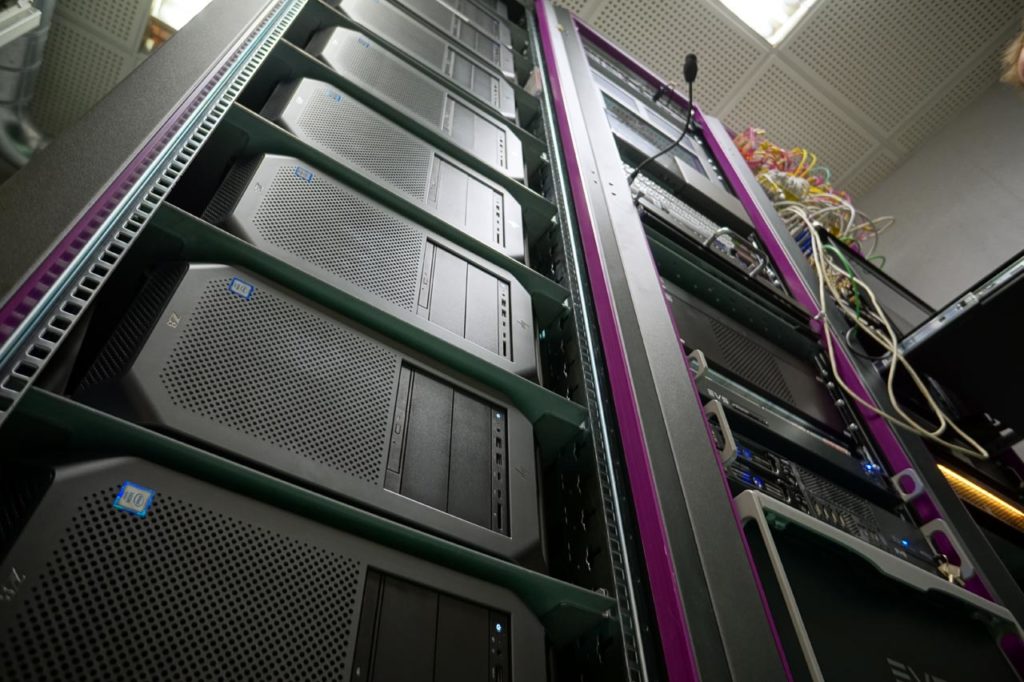
Central Hub (BTS Henri Martin)
The project was finalized in May. To allow students to continue working, parts of the equipment were moved from one room to the other. It was not just about equipment, but also about building walls or installing cables and fiber with the participation of the students.
“We made regular checks. It was necessary to take the needs and constraints of both parties into account in order to move in the right direction. There was no head of work, hence direct work with the teachers,” insists Philippe Mauduit.
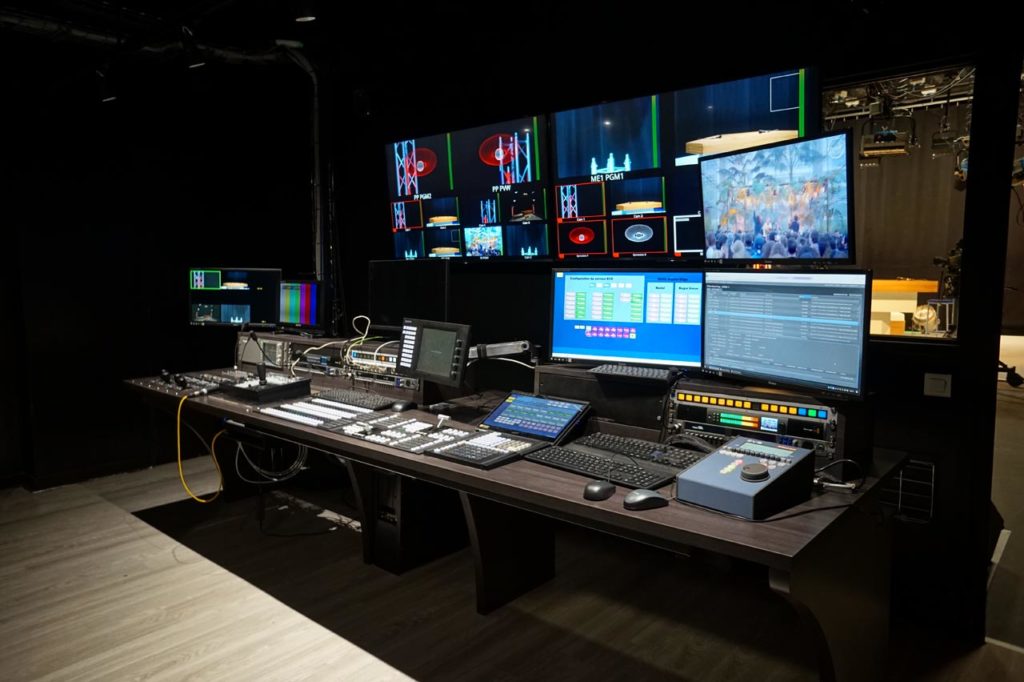
Control room at the Studio Vert (BTS Henri Martin)
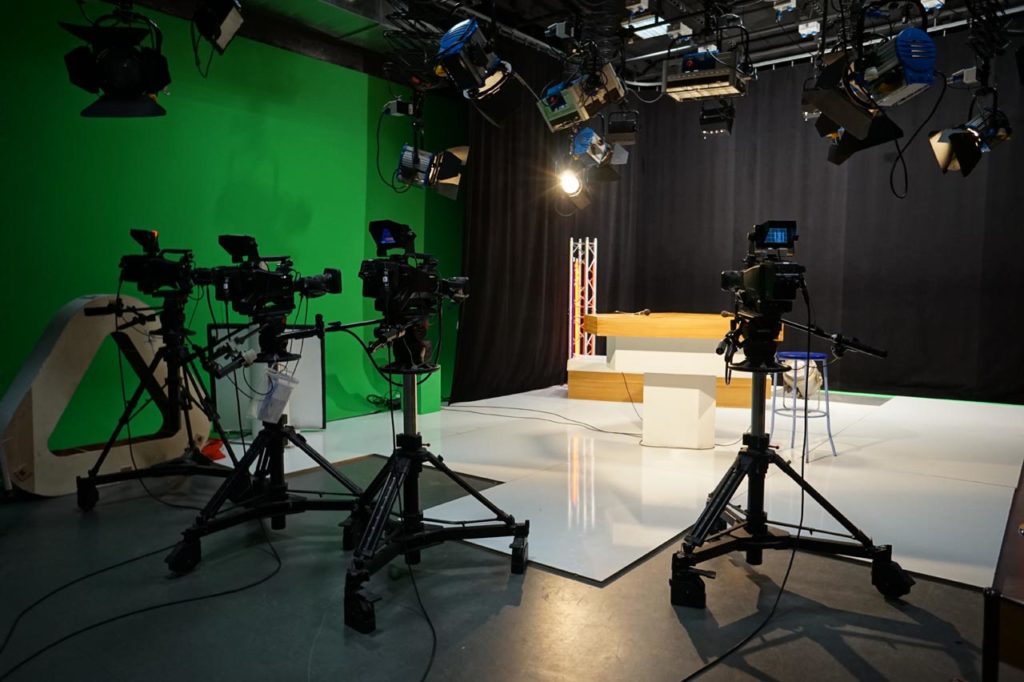
Studio Vert (BTS Henri Martin)
“We have fifteen teachers on the technical part at the BTS. You must rely on teachers who have been able to take this type of training, but also on professionals – for example we have a chief editor who comes from Canal+. As part of this project, we had not sized the importance of training on the hardware and related new technologies such as IP. BCE has trained our teachers so that they can acquire the skills necessary to use the equipment,” continues Jacques Tabary.
The reform of the French Baccalaureate in 2021 will undoubtedly impact the BTS and a reform should follow. The proof is that the BTS will go from two to three years of studies. As in the university, there will be an upgrade in the first year. Not everyone has the same level, there will be a new frame of reference for upgrades and digital will take a important part, including IP.
“Everything went well since the first contact with BCE. The team has been able to adapt and has been very flexible to meet our needs, even beyond the framework of the tender,” concludes José Delclitte.